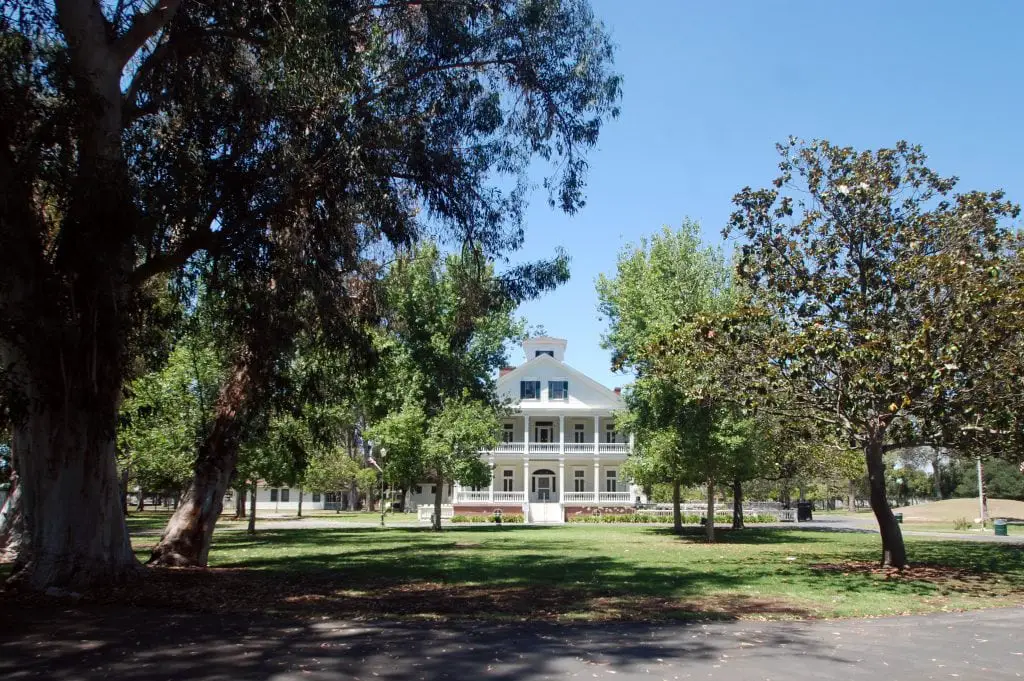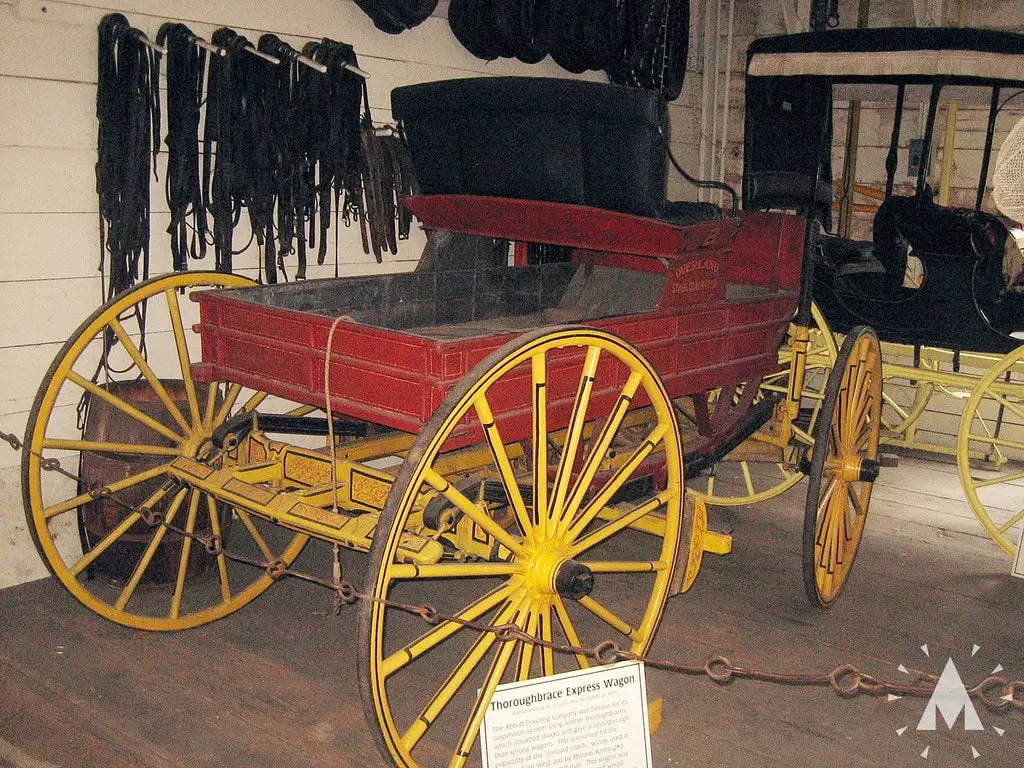The Origins and Historical Significance
Nestled in the heart of Wilmington, California, stands the Banning House, a 23-room residence that has been a cornerstone of the community since its construction in 1864. Phineas Banning, the visionary entrepreneur who founded Wilmington, built this house as a testament to his confidence in the community’s future. The residence wasn’t just a home but a symbol of aspiration and progress.
The house was constructed when Wilmington was emerging as a significant port city. Phineas Banning, often referred to as “the Father of the Port of Los Angeles,” had grand plans for the area, and the construction of his residence was a part of that vision. The house was a focal point for the community, where business and social gatherings often occurred.
Architecturally, the Banning House is a marvel of its time, representing the finest example of domestic Greek Revival architecture in Southern California. The intricate designs and the Victorian beauty of the interiors have been carefully restored, making it a living museum that transports visitors back to the 19th century. Today, 18 rooms are open to the public, each reflecting decorative elements added during 60 years of family residence.
Acquired by the City of Los Angeles in 1927, the residence and its adjacent 20 acres of parkland have earned the status of a City, State, and National Historic Landmark. The Department of Recreation and Parks oversees the upkeep of the home, stagecoach barn, and gardens, safeguarding this historical treasure for the enjoyment of future generations.
Architectural Marvels
The Banning House isn’t just a residence; it’s an architectural masterpiece that has stood the test of time. The Greek Revival style, characterized by its grand pillars and symmetrical design, is evident throughout the property. This style was quite popular in the 19th century and is a testament to the aesthetic sensibilities of the era.
Inside the house, the Victorian influence is palpable. Every room is a journey back in time, from the intricate woodwork to the ornate chandeliers. The interiors have been meticulously restored to their original grandeur, offering visitors a glimpse into the lifestyle of a bygone era.
The property isn’t just about the primary residence. The stagecoach barn and other outbuildings also hold historical importance. These structures were essential to the functioning of the estate and offered a comprehensive view of life in the 19th century. The barn, in particular, is a fascinating structure preserved with as much care as the main house.
The Friends of Banning Museum, a non-profit organization, has been instrumental in maintaining the property’s architectural integrity. Through various restoration projects and fundraising efforts, they ensure that the Banning House remains a living example of 19th-century architecture. Their work has been pivotal in preserving this historical landmark for future generations.
The Banning Family Legacy
The Banning House was more than just a residence for Phineas Banning; it was a home that housed several generations of the Banning family. Each generation left its mark on the property, adding layers of history and significance. The family continuously inhabited the house until 1925, making it a living document of changing times and tastes.
The Friends of Banning Museum, originally known as the Friends of Banning Park, played a crucial role in restoring the mansion to its original Victorian beauty. Spearheaded by Phineas Banning’s great-granddaughter, Nancy Banning Call, this group of dedicated individuals breathed new life into a property that had fallen into disrepair over the decades.

Today, the Banning Museum serves as a living history experience, offering visitors a glimpse into how the family lived, worked, and entertained. Through various educational programs, the museum also provides opportunities for third, fourth, and fifth graders to experience life in the 19th century, enriching their academic curriculum.
The house is not just a historical landmark but also a testament to the enduring legacy of the Banning family. Their influence is felt in the architecture, interiors, and the various educational programs and community events the museum hosts.
USA Quiz
How many questions would you like?
The Friends of Banning Museum continues to develop the historical aspects of the museum, ensuring that the legacy of the Banning family is preserved for future generations.

The Banning House Today
In 2023, the Banning House is a historical landmark and a vibrant museum that continues to attract locals and tourists alike. The museum offers a range of current exhibitions and programs that delve into various aspects of 19th-century life, Wilmington’s history, and the Banning family’s legacy. These exhibitions often feature artifacts, photographs, and interactive displays that make history come alive.
Visitor information and tours are readily available, making it easy for anyone interested to explore the museum. Guided tours of the Banning Residence, Stagecoach Barn, and Improbable Gateway Exhibition are offered on a first-come, first-served basis.
For adults, the suggested donation for a tour is $5, and for children, it’s $1. Group tours can also be arranged upon request, offering a more personalized experience.

The City of Los Angeles plays a significant role in the museum’s operations. The residence, stagecoach barn, and gardens fall under the stewardship of the Department of Recreation and Parks.
Their involvement ensures the museum adheres to the highest historical preservation and community engagement standards. The backing from the city has been pivotal in sustaining the museum as a hub for educational and cultural activities.
The museum’s success is a collective effort involving the Friends of Banning Museum and the local government. The City of Los Angeles has been a steadfast supporter, providing both financial and logistical assistance. Their involvement ensures that the museum remains a well-maintained and accessible historical site.

Educational Outreach
Education is at the heart of the Banning Museum’s mission. One of its most notable initiatives is the educational program targeted at third, fourth, and fifth graders. These programs offer young students a chance to experience life in the 19th century, enriching their academic curriculum. Children get a hands-on understanding of history through interactive sessions and guided tours.
The museum also hosts the “Keeping History Alive” series, a set of events and lectures that aim to educate the public about various historical topics. Recent topics have included segments on “Los Angeles in the Civil War,” offering a comprehensive view of the city’s role in significant national events. These programs make history accessible and engaging, appealing to audiences of all ages.
Volunteer opportunities are abundant at the Banning Museum. Volunteers are integral to the smooth functioning of the museum, contributing to everything from leading tours to aiding in the preservation of historical documents. The museum recently hosted a “Get To Know Us” New Volunteer Reception, encouraging more community members to get involved in preserving local history.
The educational outreach programs are a testament to the museum’s commitment to being more than just a repository of artifacts. By engaging with the community, especially the younger generation, the museum ensures that the history it preserves is also a living, breathing part of Wilmington’s present and future.
Banning House In the News
Even in 2023, the Banning House continues to make headlines, serving as a vibrant community hub. One event that garnered attention was the Phineas Banning Birthday Celebration, held on August 19. The event was a grand affair that celebrated the life and contributions of the man who laid the foundation for modern-day Wilmington.
The museum also hosts a series called “Keeping History Alive,” which recently featured a segment on “Los Angeles in the Civil War.” This series aims to educate the community about historical events and their impact on modern-day Los Angeles. It’s a fantastic initiative that combines education with entertainment, making history accessible to all.
Lastly, the Friends of Banning Museum’s annual Wisteria Regale fundraiser was on March 25. The event was a significant success, raising funds for ongoing restoration projects and educational programs. Such events ensure that the Banning House remains a museum and a living, breathing part of Wilmington’s community.

Future Prospects and Preservation
The Banning House is a beacon of historic preservation and community involvement. Upcoming events and exhibitions are continually being planned, ensuring that the museum remains an active and engaging part of the community.
Restoration efforts are ongoing, with the Friends of Banning Museum leading the charge. These projects are crucial for maintaining the structural integrity of the house and other buildings on the property. The non-profit organization also raises funds to ensure that these efforts continue unhindered.
Community involvement is encouraged, with various avenues for people to contribute to preserving this historical landmark. From volunteering to financial contributions, every little bit helps ensure that the Banning House remains a part of Wilmington’s cultural fabric.
In conclusion, the Banning House is not just a historical monument but a living entity that continues to educate, inspire, and engage the community. As we move forward, the collective efforts of the Friends of Banning Museum, the City of Los Angeles, and the local community will be instrumental in preserving this invaluable asset for generations to come.

